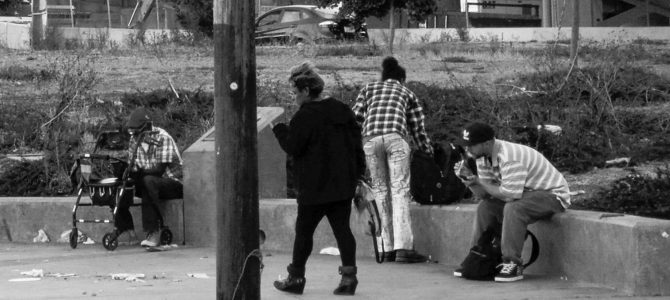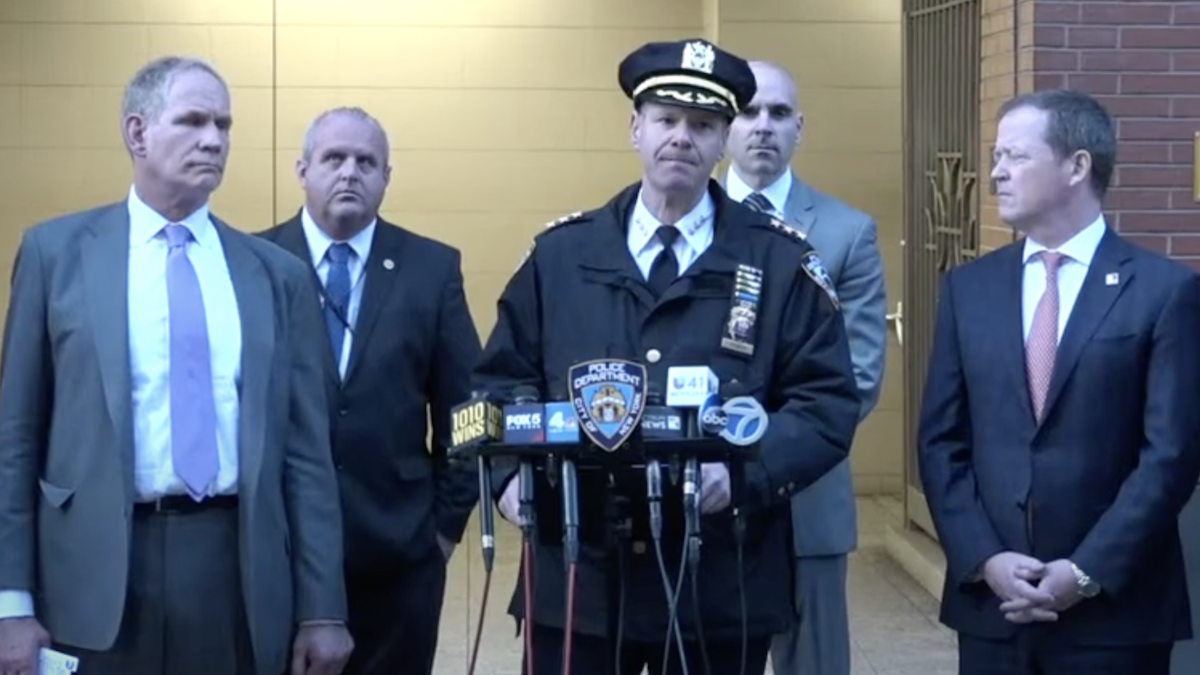
Six Target stores in San Francisco are adjusting their times, opening hours later and closing hours earlier to try to curtail soaring theft.
They join Walgreens, which has closed 17 stores over five years in direct response to criminal activity. Last month, a video went viral of a hooded and masked man riding his bike into a San Francisco branch of the chain, loading a trash bag with merchandise, and riding back out — past a powerless security guard and two others filming on their phones.
Early Monday evening, at least nine men and women smashed cases and stripped shelves in San Francisco’s high-end Neiman Marcus store, fleeing with a fortune in designer handbags. The brazenness is out of control, is goaded on by the normalization of masks, and is directly enabled by district attorneys and other politicians.
The Golden City is joined by nearby Sacramento and Los Angeles, where retail crime has spiked, but across the country as district attorneys from Massachusetts to Missouri to Texas have declared they won’t defend citizens from theft, the story has gone much the same.
While it’s insane that crime is so severe and law enforcement so nonexistent in a prosperous city that businesses must close their doors early or shut them entirely, there’s more in store. Far more ominous than a sign of how bad things have gotten, darkened windows and shuttered doors reveal just how much worse things are going to get.
In Washington, D.C., the Columbia Heights neighborhood struggled for years, mired in death, drugs, and the gangs that dealt freely in both. In 2004, when I moved to the city, it was changing but progress was slow. When our first group of friends moved there we knew when visiting that we would be unable to get a taxi to bring us home at the end of the night.
Then, after fighting to slowly bring commerce and foot traffic back, the neighborhood celebrated the opening of a Target superstore in 2008. The move, said then-Mayor Adrian Fenty, was “both the catalyst and the capstone to an unprecedented economic resurgence in Columbia Heights – where nearly $1 billion worth of new housing, retail and office space has moved through the development pipeline since 2001.”
Progress was sluggish but continued. There were robberies and murders, and even a gang war in the nearby projects, but the city worked to keep the remaining crime out of the papers because business was booming, condos were going up, and people were moving in.
In response to a retail rival’s possible move to the city, Target opened a grocery store in 2010, pushing along competition in a city where neighborhoods with high crime are also neighborhoods with no grocery stores. While activist reformers try to blame discrimination, in a business with slim margins, theft means bankruptcy. In Columbia Heights, things were safe enough to grow — and rich and poor alike benefitted.
Just as opening a retail business or a restaurant works to revitalize a neighborhood, a closure is a deathly sign of decline. While bright windows, visiting shoppers, and neighborhood jobs bring safety, vacant retail, with its boarded-up windows, graffiti, uncleaned sidewalks, and ugliness brings crime.
A University of Southern California study found that even with temporary closures, “The area immediately around a closed restaurant experienced an increase in property crime and theft from vehicles.”
“Furthermore,” the authors wrote in a Harvard Business Review article, “this increase in crime disappeared as soon as the restaurant reopened.”
There aren’t a lot of studies on this important matter, but our understanding of it goes back decades.
The elites of urban planning didn’t take the criticism well, when Jane Jacobs released her 1961 classic, “The Death And Life Of Great American Cities,” dismissing the author as a simple “housewife” uneducated in their schemes. Undeterred, one concept she famously developed was the “eyes on the street” theory of crime prevention, where she suggested mixed-use neighborhoods bring safety and vibrancy to city living.
Jacobs saw that those parks surrounded only by office buildings became a destination for criminals when the offices closed for the night and everyone with a legitimate reason to be there went home. She compared these with parks in mixed-use neighborhoods, where the diversity might include early morning coffee shops, offices, retail, homes, and the evening’s bars.
Mixed-use neighborhoods saw people on legal business at nearly all hours, and she saw the safety and vibrancy that brought with it. You could have all the pretty parks you like, she found, but in the end it is the neighborhood that confers “the boon of life and appreciation” on them — not the other way around.
Her critics pointed out that she didn’t have any degrees in urban planning, and that was true: She was a reporter, wife, and mother raising her three kids with her husband in the city. But Jacobs didn’t need a degree from some college to look out her window, see if it was safe or not, and observe why. She was right, and along with “broken windows theory” and a number of others, hard-headed reformers beat back the elites and made American safe again — for a time.
More than 50 years later, over-credentialed activists and politicians once again say they know better, and tell us our neighborhoods will be more just and “equitable” if we don’t enforce laws. Now business owners are telling those politicians they’ll need to close their doors. Residents are left to feel the pain of both the crime and the closures. The boon of life and appreciation is suffocating.
Crime begets crime begets crime, and changes to enforcement and prosecution policies are entirely to blame. In nearby Oakland, where murder is up 90 percent in the past year and car-jackings up 88 percent while the city council continues to cut police, city leaders dismiss the surge in crime as “a bump in the road,” but for the people who live there, strive to work there, and try to not be murdered there, it’s more than that. As with Jane Jacobs, you don’t need a degree to know it.
Rising crime is a direct threat to our towns, our neighborhoods, and our families. Already in great American cities, urban blight is setting in. We’ve down this path before for virtually the exact same bleeding-heart reasons, and we lived through the tremendous pain it brought. We cannot let it happen again — unless we do.









